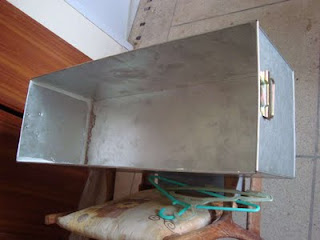Hi my Friends,
World is full of genius persons and i amazed to see how computer made life easier and how the ideas evolves and takes it shapes in real world...Long story short, sometime ago i saw a graphical fountain on You-tube:
http://www.youtube.com/watch?v=tnPnwET4x9k
Watching this video amazed me and convinced me to make a cheap but high quality version of the same... Looking at the fountain, it seems that water droplets are controlled through 100's of solenoid valves and each of the solenoid valve is controlled through computer in a complex manner and a complex programming...
So to make a computer controlled graphical fountain, we require:
1- A complex software that generate images into binary data and send to micro-controller.
2- Electronic hardware that plays as a bridge between Computer and Solenoid valves.
3- Mechanical structure that hold overhead reservoir with solenoid valves and a drain.
All above tasks are doable..... So i started making program and electronics hardware at the same time... when i tired from electronics i started programming... so eventually both the software and hardware completed at the same time..
The following picture of software shows how a number of solenoid valves can be operated in a manner to make beautiful stunning water effects....The Software is user freindly and designed to operate in following steps:
1- You have to select an image 'WMF' black and white
2- Select the number of solenoid valves you have installed on the fountain. The greater the number of valves the greater the resolution and beauty of fountain.
3-Convert this image into '1' and '0' i.e. binary data... If you check the 'Add each design to one file' checkbox..you will have different designs in a single file
4-Open the computer USB port at which the micro-controller is installed.
5-Press 'SEND' button and see the stunning effects..
More explained:
1- The software convert the photograph in binary data. The Black color is '1' and the white color is '0'.
2- Considering 16 solenoid valves, will give you 16 values of '1' and '0'. these 16 values has to be considered as two bytes data.
3- my software then convert each row into hexadecimal to shorten the data.
4- this data is sent through USB serial port to the micro-controller.
5- Their is small adjustable delay between the two rows of data. this delay separate the drops of rows.
By electronic Hardware i mean the "Simulator", that consist of Microcontroller and LED's.. currently installed 16 LED's to mimic the Solenoid valves..
Here is the short video of working simulator:
http://www.youtube.com/watch?v=bGZjb0nHGJQ
I also purchased 16 solenoid valves too to start making the structure of the fountain.... I am here posting pictures of my software and its working...







 and when the voltage below this value ON the fountain... I know you people will understand.. this is not a real Anemometer but with wind it gives us a voltage reading which we can use to start or stop the fountain.
and when the voltage below this value ON the fountain... I know you people will understand.. this is not a real Anemometer but with wind it gives us a voltage reading which we can use to start or stop the fountain.











 ...
...













